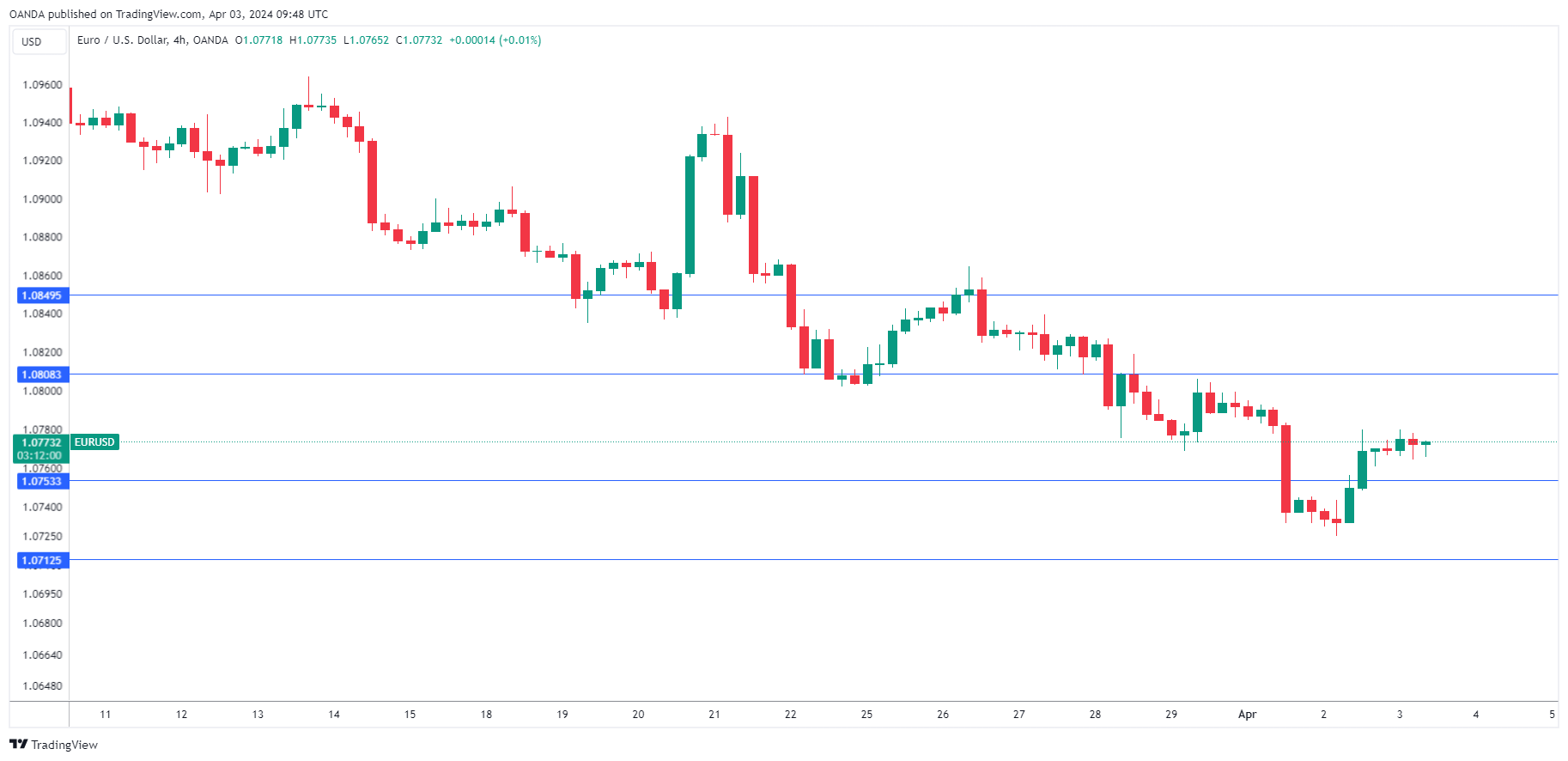The euro showed little movement on Wednesday. In European trading, it was trading 0.05% higher at 1.0777.
Eurozone inflation rate gradually declines
Inflation rates in the euro area continue to decline. CPI in March fell to 2.4% year-on-year, down from 2.6% in February and below market expectations of 2.6%. This matched November's 28-month low and was driven by continued slowdown in food inflation. Monthly CPI rose to 0.8%, up from 0.6% but below expectations of 0.9%.
Core CPI also declined, at 2.9% year over year. This was lower than February's 3.1% rise and also below market expectations of 3.0%. The core CPI, which is considered more important than the overall CPI release, fell for the eighth straight month, to its lowest level since February 2022. Germany's inflation report released yesterday also showed that inflation fell in March, along with the headline CPI. The increase is 2.2% and the core CPI drops to 3.3%.
The decline in inflation is encouraging news for the ECB, which meets next week. The central bank will need to balance weaker economic activity, which would prompt further pauses, with lower inflation, which would support calls for rate cuts.
The ECB is likely to keep interest rates on hold next week, but is likely to push the trigger on a rate cut at its June meeting. The ECB may want to prepare markets for a shift in monetary policy, and we could see dovish signals at next week's board meeting, which could weigh on the euro There is.
In the United States, today's ADP jobs report released a number of employment figures, highlighted by Friday's nonfarm payrolls numbers. Although ADP reports are not considered a reliable precursor to NFP, investors are interested in labor reports that can be analyzed in advance of NFP announcements. ADP was 140,000 in February and is expected to increase slightly to 148,000 in March.
EUR/USD technical
- EUR/USD is putting pressure on the support at 1.0753. Below, 1.0712 is supported.
- 1.0808 and 1.0849 are the next resistance levels
original post

